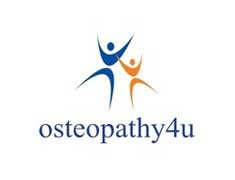What is Osteopathy?
Osteopaths are governed by the General Osteopathic Council who define osteopathy as:
"...a way of detecting and treating damaged parts of the body such as muscles, ligaments, nerves and joints. When the body is balanced and efficient, just like a well tuned engine, it will function with the minimum of wear and tear, leaving more energy for living."
Osteopathy recognises that much of the pain and disability we suffer stems from abnormalities in our body's structure and function.
Osteopaths diagnose and treat problems with muscles, ligaments, nerves and joints to help the body's natural healing ability
Treatment involves gentle, manual techniques - easing pain, reducing swelling and improving mobility. Often, this involves manipulation which can result in an audible 'crack' which is simply the sound of gas bubbles popping in the fluid of the joints.
Osteopathy does not involve the use of drugs or surgery.
These are the eight major principles of osteopathy and are widely taught throughout the international osteopathic community.
The body is a unit.
Structure and function are reciprocally inter-related.
The body possesses self-regulatory mechanisms.
The body has the inherent capacity to defend and repair itself.
When the normal adaptability is disrupted, or when environmental changes overcome the body's capacity for self maintenance, disease may ensue.
The movement of body fluids is essential to the maintenance of health.
The nerves play a crucial part in controlling the fluids of the body.
There are somatic components to disease that are not only manifestations of disease, but also are factors that contribute to maintenance of the disease state.
These principles are not held by osteopathic physicians to be empirical laws; they are thought to be the underpinnings of the osteopathic philosophy on health and disease.
If you suffer from...
- Back & neck pain
- Upper & lower limb injuries
- Shoulder, rib & jaw injuries
- Sciatic and other nerve pain
- Arthritic pain
- Sports injuries
- Whiplash affected disorders
- Circulatory and digestive problems
- Muscular injuries and sprains
- Post-injury rehabilitation
- Acute / traumatic injuries
- Stress & anxiety
- Gait biomechanics & orthotics
